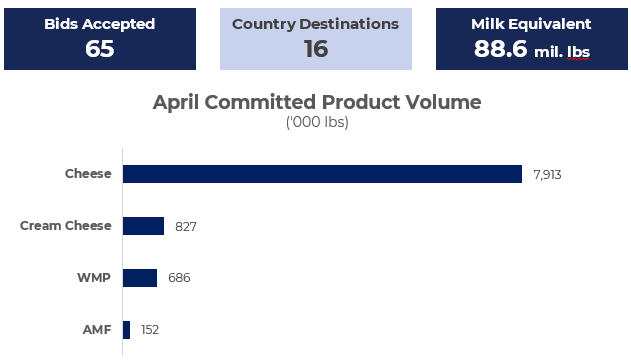Many Americans recognize dairy as a cornerstone of a healthy diet but continue to fall short of recommended daily intake as endorsed by the Dietary Guidelines for Americans. An in-depth consumer survey released today by the International Food Information Council (IFIC) and supported by the International Dairy Foods Association (IDFA) and the National Milk Producers Federation (NMPF), explores barriers to dairy nutrition among Americans and how to remove them.
The report provides a roadmap for how industry, government, and health and nutrition groups can improve awareness of and access to lactose-free milk and dairy products; expand understanding about dairy’s nutritional value; and work with the dairy industry to extend shelf life and improve the value of dairy purchases to consumers.
The report draws on the beliefs, behaviors, and perceptions of Black, Latino, Asian/Pacific Islander, and Non-Hispanic White consumers toward dairy.
Key Data Points:
- Missed Opportunities for Lactose-Free: Nearly two in three Americans say they’ve never consumed lactose-free milk (64%), lactose-free flavored milk (76%), or other lactose-free dairy products other than milk (68%). The rate of non-consumption is more than half among Latino, Black, and Asian/Pacific Islander communities, indicating low awareness among groups that report higher rates of lactose sensitivity.
- Affordability a Leading Factor for SNAP and Non-SNAP Households Alike: Approximately 30% of all races and ethnicities at all income levels cite affordability as a reason for consuming milk.
- Expiration Dates and “Passive Avoidance” Top Barriers: Concern about spoilage before it’s used (19%), is a leading reason consumers avoid milk. Meanwhile, 37% of respondents cited no specific reason for limiting dairy consumption, suggesting “passive avoidance” that could be overcome with greater media, healthcare, and community outreach. Self-reported lactose sensitivities also contribute to higher levels of avoidance.
- Taste and Health Top Purchase Drivers, Cheese Reigns Supreme: Cheese is the most frequently consumed dairy product (90% weekly), followed by butter (85%), milk (75%), and yogurt (60%). Consumers overwhelmingly rank taste as the main factor for purchasing cheese, yogurt, and milk, followed by dairy being a good source of protein. Health benefits cited include bone health as the most recognized (90%), and other advantages including immune system support (65%) and heart health (54%).
Spotlighting a Disconnect Between Perception and Consumption
The “Exploring Fluid Milk & Dairy Food Consumption Patterns to Improve Diet Quality & Nutrition Equity” study reveals a disconnect between consumer perception and actual dairy intake. While a strong majority (78%) of Americans believe dairy is essential, many are not reaping its benefits.
“Good nutrition is the foundation of health and wellness for adults and children across all demographics, and dairy is a crucial part of a healthy diet beginning at a very young age,” said Michelle Matto, MPH, RDN, associate vice president of regulatory affairs and nutrition, IDFA. “This survey shows how consumers value dairy for nutrition and taste but may lack adequate information about or access to the types of dairy that are right for them and their families. It demonstrates that dairy will need to expand its partnerships with communities of color, with health and nutrition experts, and with policymakers to remove barriers preventing Americans from getting adequate dairy nutrition, including high quality protein, calcium, vitamin D, potassium, and health benefits including better bone health and lower risk for type 2 diabetes and cardiovascular disease.”
Moving Forward
The survey shows the clear need for greater educational efforts, said Miquela Hanselman, director of regulatory affairs for NMPF.
“The IFIC research puts data behind both the importance of dairy nutrition and the need for better education about what dairy options are available and what benefits they provide,” Hanselman said. “With discussion of the next Dietary Guidelines under way, it’s important that this information be communicated clearly and forcefully to all who may benefit, from consumers who need dairy nutrition to policymakers who determine federal programs.”
The IFIC research underscores the importance of targeted outreach programs to improve overall diet quality and achieve greater nutrition equity.
“While dairy is a chronically under consumed food group among many Americans, BIPOC and SNAP-eligible households may benefit most from hearing more about the health benefits associated with consistent dairy consumption. Education and outreach efforts tailored to increase awareness and availability of lactose-free dairy foods and beverages, in addition to emphasizing dairy’s benefits beyond bone health for everyone, present new opportunities,” said IFIC President & CEO Wendy Reinhardt Kapsak, MS, RDN. “Increased dairy consumption among all populations can positively contribute to improved diet quality and nutrition equity — availability, accessible, and affordability — goals that support enhanced health for all Americans.”







